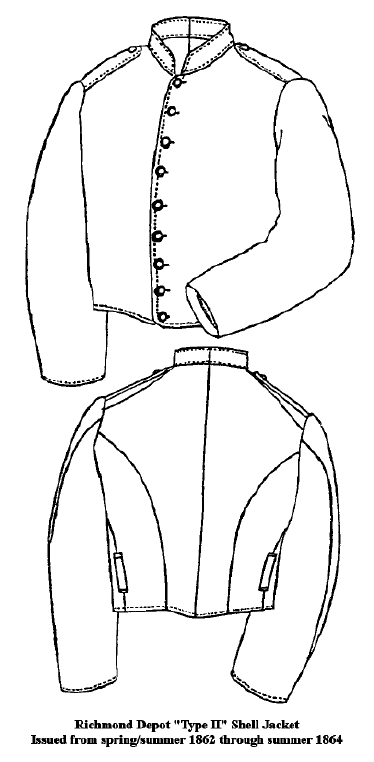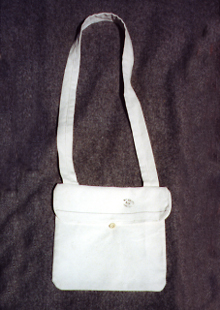There are many myth regarding the most tragic period of American History. These myths, in part, exist because of the lack of information. Because of the Yankees' pension for burning things, many of the South's most important documents were destroyed. Not even the Family Bibles, that recorded births, deaths and marriages, were spared. Other destruction of public documents were destroyed by artillery bombardment and just the nature of war. Other documents have been lost over the years to poor storage. One of the myths that is being dispelled is that of the Ragged Confederacy. Information is being found that contradicts that image.
Below are some sketches of the three types of shell jackets issued by the Richmond Depot. A sample of jean or jane cloth, that was used to construct the uniforms issued to the enlisted personal of the 37th Virginia, is at the bottom of this page. Trousers were issued in the same fabric, yoked buckled tab back, stove pipe legs, five paper back tin button fly and baggy seats. The trousers were worn high on the waist and supported by suspenders that were sewn in the back where they crossed. Leather tabs were, also, sewn to the suspenders that buttoned to paper back tin buttons on the waist band of the trousers. It is extremely annoying to see an infantryman wearing artillery red suspenders. Many of the shirts were made by family members and sent to the soldiers. Therefore, they were made of a variety of fabrics. I have seen one that was made from a Mother's best table cloth. Hats were just as varied as the shirts. There were issued Kepis, confiscated Bummers, and a wide variety of civilian headwear. Footwear was, generally, woolen knitted socks and brogans with wooden pegged slick leather soles and heel plates. |









